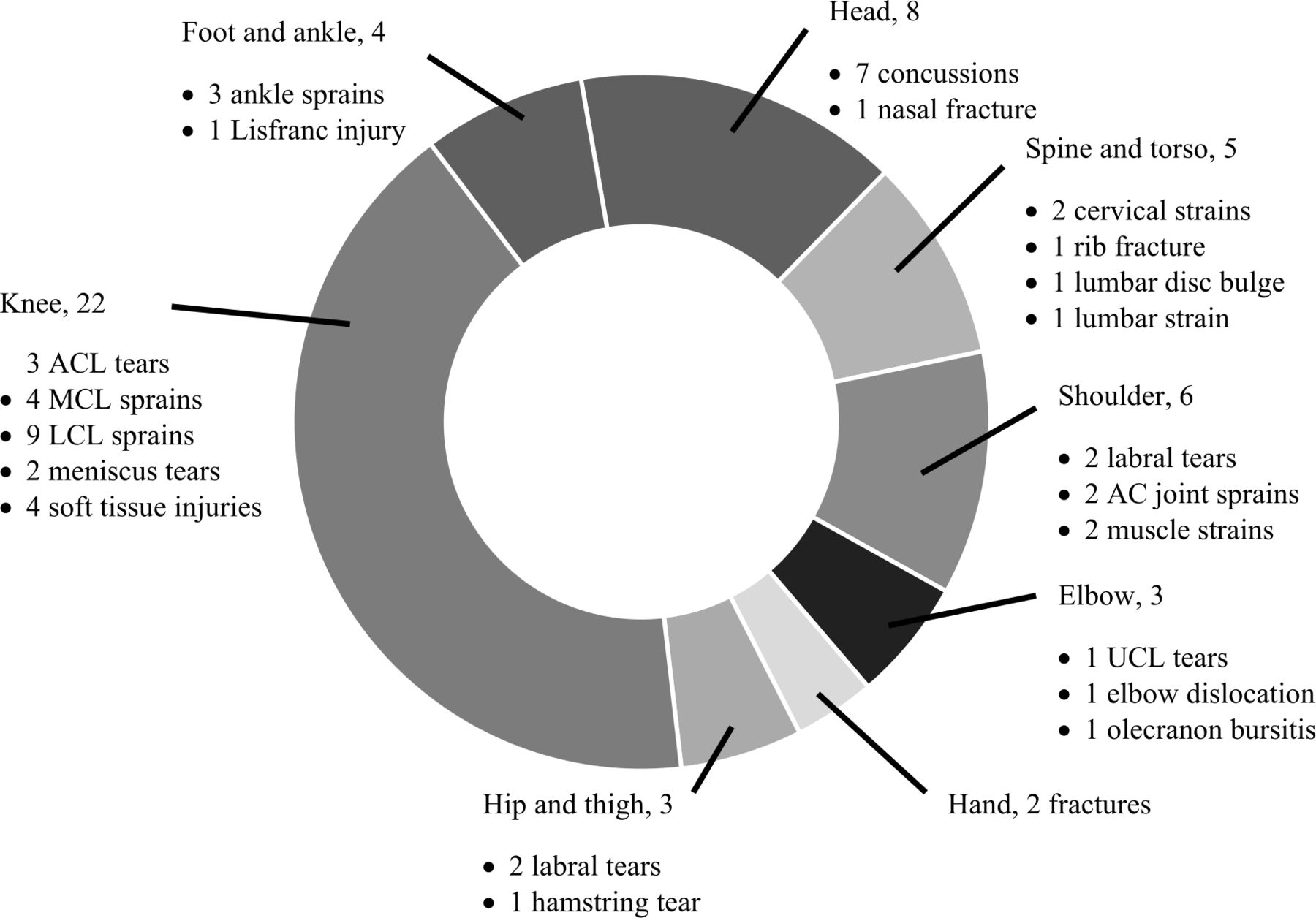Association of in-competition injury risk and the degree of rapid weight cutting prior to competition in division I collegiate wrestlers
Erin Hammer British Journal of Sports Medicine Published Online First: 19 October 2022.
Objectives Weight cutting is thought to offer a competitive advantage in wrestling. Dehydration has deleterious effects on physical and cognitive function, which may increase the risk of injury. The purpose of the study was to investigate whether the degree of weight cutting was associated with injury risk.
Methods Data were collected prospectively in a cohort of collegiate wrestlers over seven seasons. Changes in weight, body fat and lean mass were measured during the preseason, at midseason and before competition. Cox proportional-hazard ratios were calculated for risk of in-competition injury.
Results Among 67 unique division 1 collegiate wrestlers (163 athlete seasons), there were 53 unique injuries affecting 46 athletes. There was no difference in absolute weight change, per cent weight change, per cent body fat change or per cent lean mass change between injured and non-injured wrestlers from the preseason to midseason measurements. From midseason to competition weight, change in body weight was −7.0%±3.2% (−5.3 kg±2.6) in injured athletes compared with −5.7%±3.3% (−4.3 kg±2.5) in non-injured athletes. For every kilogram of body weight lost, wrestlers had a 14% increased hazard of injury (HR 1.14, 95% CI 1.04 to 1.25, p=0.004). For every 1% of body weight lost, wrestlers had an 11% increased hazard of injury (HR 1.11, 95% CI 1.03 to 1.19, p=0.005).
Conclusion Rapid weight cutting was associated with a higher risk of in-competition injuries in division 1 collegiate wrestlers. For every per cent in body weight lost, wrestlers had an 11% increased hazard of injury during competition.














